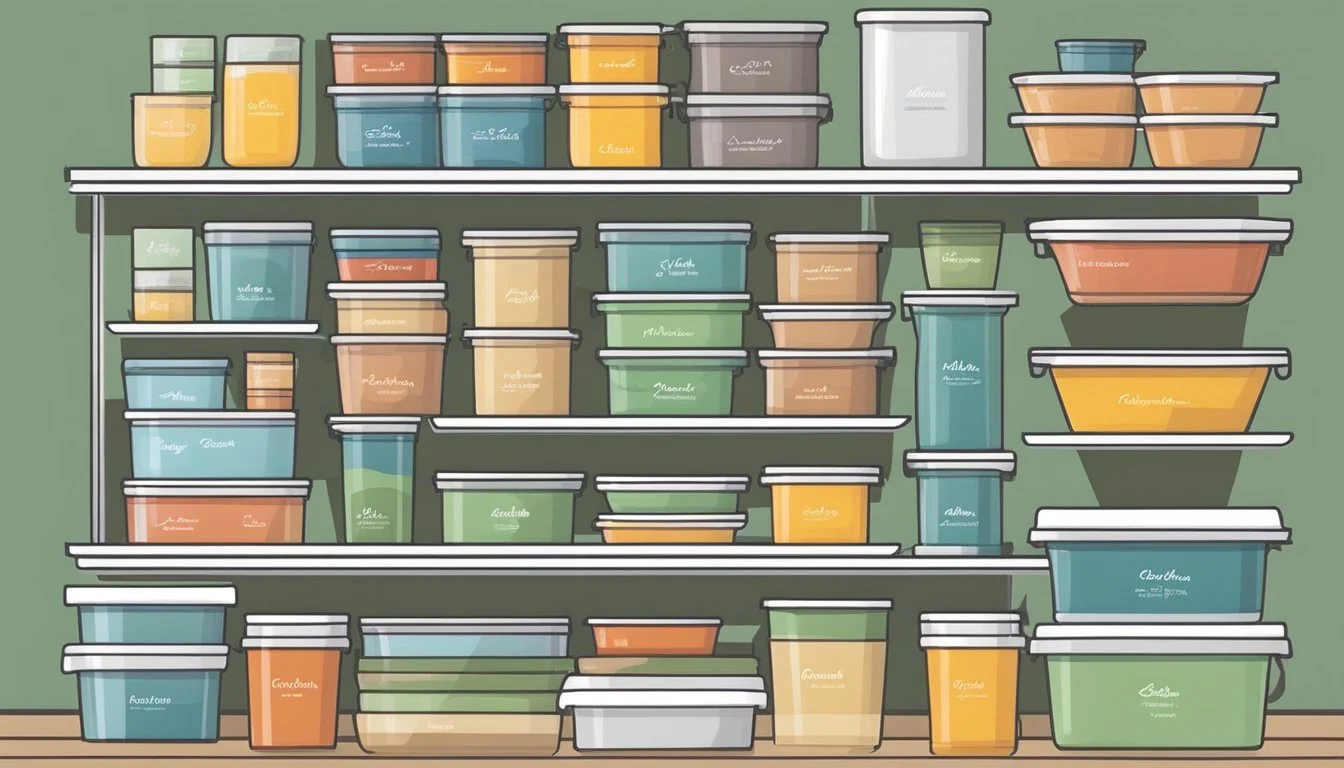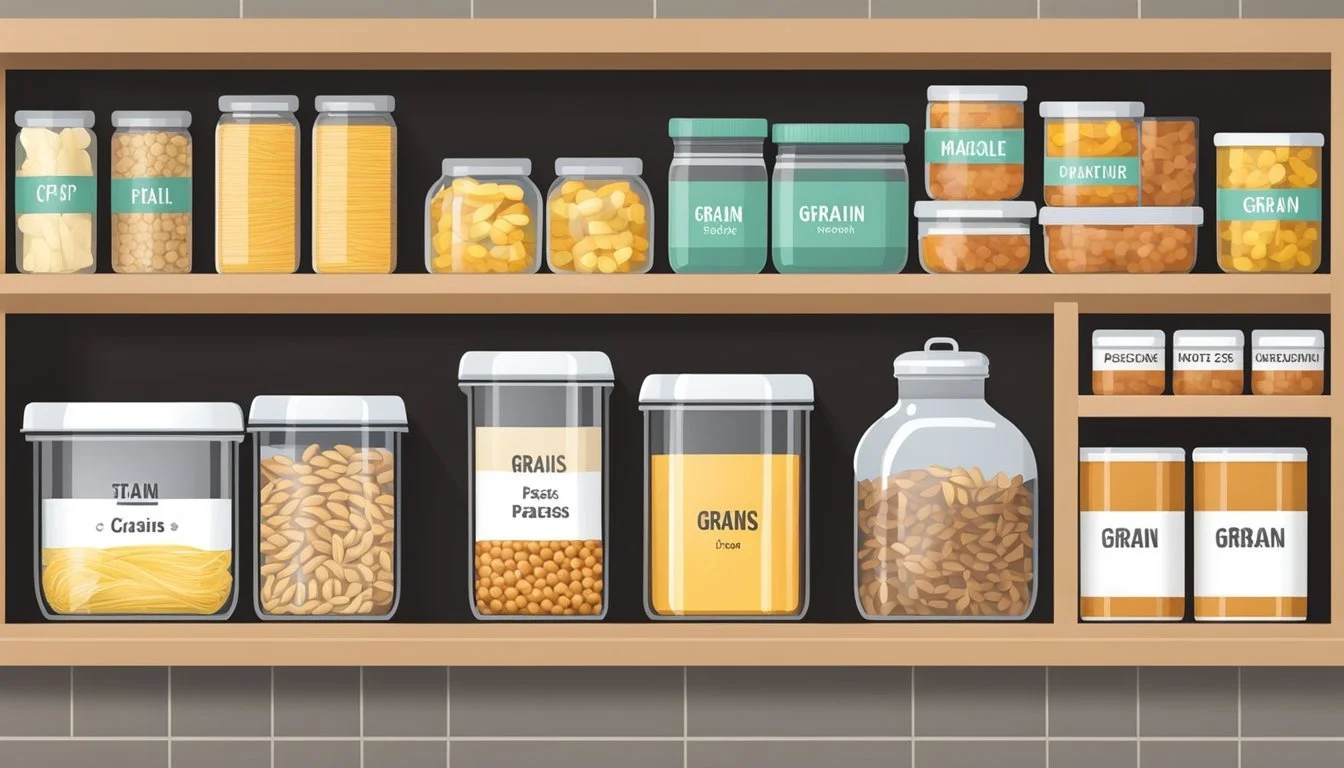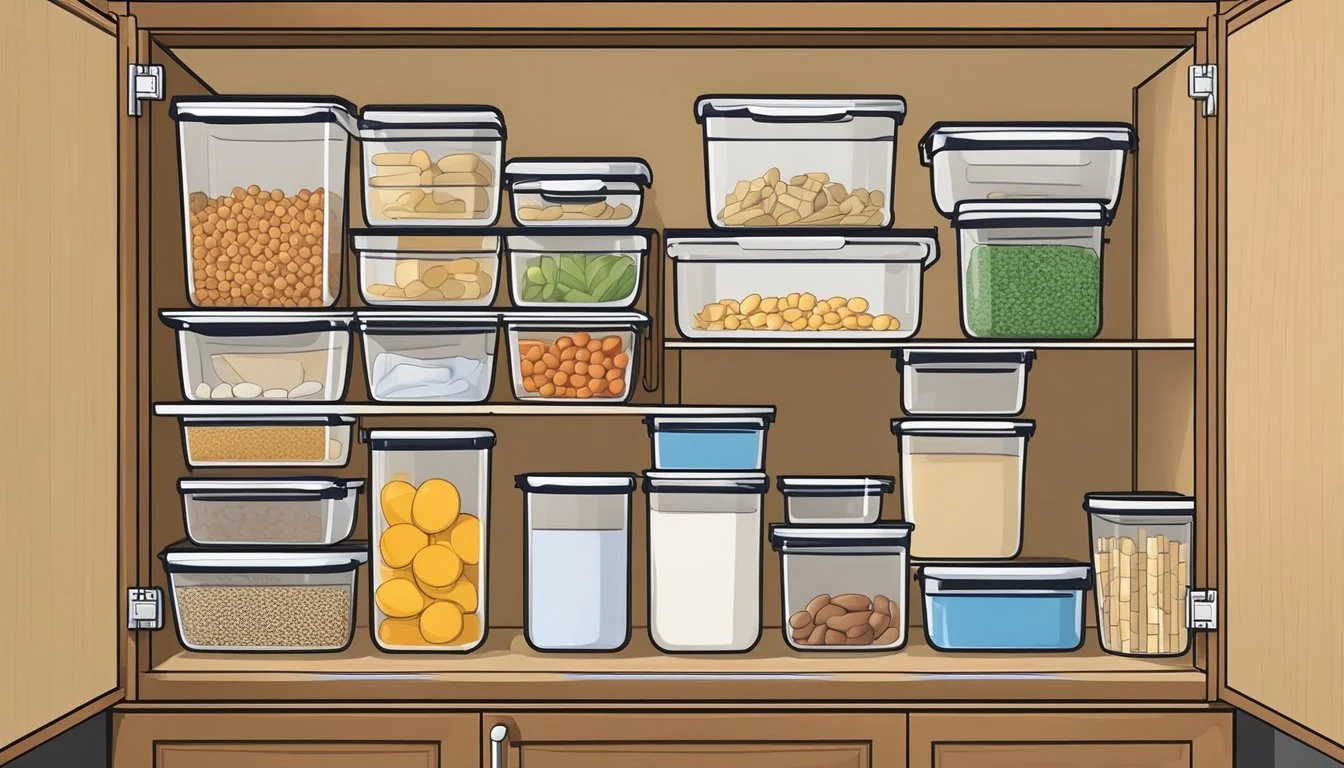10 Ways to Use Stackable Containers for Efficient Kitchen Organization
Organizing a kitchen effectively is crucial for creating a clutter-free and efficient cooking environment. Stackable containers offer a versatile solution for achieving this goal, as they can be used in numerous ways to streamline organization and maximize space. These containers come in various sizes and materials, providing a flexible system that can be tailored to fit the unique storage needs of any kitchen.
Utilizing stackable containers helps maintain a tidy countertop and ensures that all kitchen items are easy to access. Whether it's for storing dry goods, organizing utensils, or keeping spices within reach, these containers transform a chaotic kitchen into a well-ordered space. They make it easier to find what is needed without rummaging through cabinets, saving time and reducing frustration during meal preparation.
Moreover, the clear design of many stackable containers allows for quick identification of contents, which simplifies inventory management and helps avoid unnecessary purchases. By stacking vertically, they utilize the often-underused vertical space in cabinets and pantries, thereby freeing up valuable real estate on the kitchen counters and in drawers. This method of organization not only enhances the functionality of the kitchen but also contributes to a clean and visually appealing cooking area.
Assessing Your Kitchen Space
Before diving into the organization of your kitchen with stackable containers, one must evaluate the available space and define their needs. This involves looking at existing shelves and counter space while considering the storage of small appliances.
Determining Storage Needs
To determine storage needs, start by emptying the kitchen cabinets and shelves. Catalogue items according to their use and frequency of usage. It's essential to:
Identify frequently used items: These should be easily reachable.
Note lesser-used items: These can be stored higher up or in less accessible spots.
Create an inventory checklist to keep track of what you have.
Maximizing Counter Space
Maximizing counter space is crucial in maintaining a functional kitchen. Strategies include:
Use vertical space: Introduce stackable containers on shelves to utilize the full height of the kitchen.
Store small appliances: Consider which appliances need to be on the counter. Those seldom used can be kept in cabinets or shelves.
Keep it clear: A clear counter provides more space for meal prep and reduces clutter. Use stackable containers to organize items in drawers or cabinets and free up this valuable space.
Starting With a Clean Slate
Before one can effectively utilize stackable containers for kitchen organization, it is crucial to begin with a clean, clutter-free environment. This sets the foundation for a well-organized kitchen.
The Importance of Decluttering
Decluttering is the first step in the process of organizing the kitchen. Removal of unused or rarely used items frees up space and makes it easier to assess what kitchen essentials require organizing. During this phase, it is beneficial to categorize items into what to keep, donate, or discard.
Cleaning and Preparing Surfaces
Once decluttering is complete, it is necessary to clean all surfaces thoroughly before placing any containers. Cleaning supplies that should be used include:
Multi-surface cleaner
Microfiber cloths
Antibacterial wipes
Effective cleaning ensures that all areas, especially those that will host stackable containers, are free from dust, spills, and crumbs. Proper preparation of surfaces is essential for good kitchen hygiene and to maintain the quality of stored items.
Container Selection and Use
The effectiveness of kitchen organization hinges on selecting the right stackable containers and employing them strategically to maximize space and maintain order.
Choosing the Right Stackable Containers
When one selects stackable containers, it's critical to consider material and size. Clear containers allow for easy identification of contents, while a variety of sizes ensures that every item, from bulk pantry staples to small dry goods, has a suitable place. Rectangular or square containers make more efficient use of space compared to round ones.
Using Containers in the Pantry
For the pantry, stackable containers create a visually appealing and functional way to store and access items. Group similar items together—mason jars can be excellent for grains and legumes, while larger bins are ideal for bulky items like bags of chips or bread.
Benefits:
Visibility of items
Easy stacking and access
Keeps food fresh
Utilizing Containers for Spices
In a spice drawer, smaller stackable containers, preferably with a uniform shape, minimize wasted space and make labels easily visible. They should be airtight to preserve the flavors of the spices. Sort spices alphabetically or by frequency of use for quick retrieval.
Airtight seals
Uniform size
Easy labeling
Specialized Containers for Wet and Dry Items
Lastly, use specialized food storage containers designed for wet and dry items to prevent moisture transfer and maintain food quality. Tupperware with reliable seals can protect the integrity of wet items like soups and sauces, while dry items such as pasta or flour benefit from airtight dry goods containers which prevent clumping or staleness.
Considerations:
Moisture resistance for wet items
Airtight seals for dry goods
Material durability and safety
Implementing Organizational Systems
Stackable containers offer an excellent foundation for an organized kitchen, but their effectiveness can be heightened through strategic use of additional organizational tools. Each has a distinct role in maintaining order and improving functionality in the kitchen environment.
Using Lazy Susans and Turntables
A Lazy Susan or a turntable makes accessing items in corner cabinets or deep shelves effortless. They're particularly useful for storing condiments, spices, and small jars which can easily get lost at the back of a cabinet. One can simply spin the turntable and immediately locate the required item without disturbing other products.
Integrating Shelf Risers and Dividers
Shelf risers elevate kitchenware, creating a double layer of storage and making it easier to reach items at the back of the cabinet. Meanwhile, dividers are vital in keeping items separate and upright. They work exceptionally well for organizing cutting boards, baking trays, and platters that are typically stored vertically.
Employing Drawer Dividers for Utensils
Drawer organization is greatly improved with drawer dividers. Specifically, an utensil drawer organizer can sort and compartmentalize utensils and kitchen gadgets, making them readily accessible. Dividers can be adjustable or fixed, fitting various drawer sizes and keeping utensils neatly separated.
Labeling for Efficiency
When utilizing stackable containers in the kitchen, the efficiency of identification and retrieval is paramount. Labels play a crucial role in this aspect. A well-labeled container system helps individuals quickly find what they need without rummaging through every single container. This saves time and reduces frustration during the cooking process.
Types of Labels:
Permanent Labels: Ideal for containers holding staple items that do not change frequently, like flour or sugar.
Removable Labels: Suitable for items that get refilled with different contents, allowing for flexibility and reusability.
Labeling Tips:
Consistency: Keep the font and label size consistent for a clean, organized look.
Visibility: Use bold lettering to enhance readability.
Positioning: Place labels at eye-level or on the container's front for easy identification.
Implementation:
Chalkboard Labels: They are a versatile option offering ease of rewriting and personalization. Users can write with chalk markers and erase them with a damp cloth.
Advantages Disadvantages Easy to update May smudge if wet Customizable Limited to chalk or special markers Reusable
By using efficient labeling on stackable containers, one can streamline their kitchen organization. The approach ensures that items are accessible and inventory management becomes more manageable. Whether opting for classic stick-on labels or trendy chalkboard styles, the key is to maintain organization that aligns with users' needs and kitchen activities.
Effective Use of Vertical Space
Maximizing vertical space in the kitchen is crucial for organization, especially when counter space is limited. Strategically placing stackable containers on shelving and utilizing under-cabinet solutions can create an orderly and functional kitchen environment.
Installing Open Shelving and Hooks
Open shelving offers an accessible platform for stackable containers. The key is selecting shelves with a suitable depth to hold containers while maintaining ease of reach. It's essential to ensure that the shelves are securely anchored to support the weight of stacked items.
Open Shelving: A selection of various shelf lengths accommodates containers of differing sizes and heights.
Hooks: Installing hooks beneath shelves can hang mugs or utensils, freeing up valuable shelf space for stackable containers.
Making Use of Adjustable Shelves and Under-Cabinet Solutions
Adjustable shelves provide flexibility for stackable containers of different heights, allowing one to alter spaces between shelves to fit their storage needs. Under-cabinet solutions, like wine glass racks, bring functionality without occupying much-needed counter or cabinet space.
Adjustable Shelves:
Versatility in spacing
Shift positions to store tall items or multiple stacked containers
Under-Cabinet Solutions:
Under-cabinet wine glass racks: They keep glassware organized and free up shelf space for stackable containers.
Users can affix these racks easily to the bottom of existing cabinets.
Organizing Pots, Pans, and Lids
Organizing cookware efficiently calls for a blend of strategy and the right accessories. Stackable containers offer a flexible and space-saving solution to keep pots, pans, and lids in order.
Innovative Solutions for Storing Cookware
Stackable bins and baskets can be used to create a structured system within cabinets or shelves. By choosing containers that are sized appropriately for the depth and width of the storage space, individuals can maximize their organization potential. Stackable bins provide a neat way to group similar items together, ensuring that pans and pots are sorted by size and type.
For lids, specially designed plate holders or lid organizers can be employed to keep them upright and easily accessible. These organizers often come in adjustable models to fit various lid sizes, allowing for a customizable and tidy arrangement within the stackable containers. Utilizing vertical space not only helps in locating lids quickly but also protects them from scratches and damage that can occur when they are stored haphazardly.
When planning the layout, cookware that's used most frequently should be placed in the most reachable bins or baskets at the front. Less commonly used items can be positioned towards the back or in the lower stacks. This strategy enhances both the aesthetics and functionality of kitchen storage, making the cooking process smoother and more enjoyable.
Cookware Item Suggested Storage Solution Pots and Pans Stackable Bins and Baskets, Grouped by Size and Function Lids Plate Holders or Adjustable Lid Organizers in Bins
TIP: Always measure the cabinet or shelf space before purchasing stackable containers, to ensure a perfect fit and to avoid wasted space.
Beverage and Water Bottle Storage
Stackable containers can revolutionize the way one organizes their assortment of beverages and water bottles in a kitchen. These containers not only maximize vertical space but also keep items accessible and neatly arranged.
When arranging water bottles, consider using clear stackable bins, allowing for easy visibility and selection. These bins can be categorized by size or use—such as sports bottles, reusable water bottles, or travel mugs.
Here's a simple way to structure your water bottle storage:
Adjustable Racks: They conform to the size of your bottles, making them perfect for various shapes and sizes.
Stackable Holders: If the cabinet height allows, holders that stack on top of each other can double or triple your storage space.
For those with limited cabinet space, a rolling cart with stackable bins can serve as a movable storage unit. This allows bottles to be transported between the kitchen, dining area, or even outdoors.
Consider these options:
Drawer Dividers: Organize bottles horizontally if drawers are more convenient for your space.
Door Racks: Make use of the often-overlooked space on cabinet doors.
Wire Frames: These can be mounted under shelves or inside cabinet doors to hang bottles by their necks, saving shelf space for other items.
Remember that by using these stackable solutions, not only do you save space, but you also maintain an orderly and visually appealing kitchen.
Maintaining Your Organized Kitchen
Once a kitchen is organized, it requires periodic attention to maintain the system and ensure that it remains functional and efficient. Keeping stackable containers properly managed prevents clutter from returning and preserves the kitchen's workflow.
Regular Check-ups and Reorganization
Regular check-ups aid in avoiding the gradual accumulation of disarray. Homeowners should schedule monthly reviews of their kitchen spaces, particularly the areas where stackable containers are used. During these reviews, it's important to:
Evaluate Usage: Assess which containers are frequently used and which are not, possibly reallocating or removing seldom-used items.
Reorganize As Necessary: Shift contents around using stackable shelves to adapt to changes in kitchen usage patterns or seasonal cooking habits.
For example, if they find that corner cabinets are becoming congested, they might consider introducing corner stackable shelves to better utilize the space. Or if there's an increase in bulk food purchases, additional stackable containers might be warranted to maintain organization.
Moreover, aligning stackable containers and labeling their contents allows for quick identification and accessibility. They should ensure that lids and containers are matched correctly and that damaged items are replaced to avoid frustration during cooking or meal prep.
To systematically maintain their organization:
Homeowners should inspect stackable containers for cleanliness and usability.
They should consolidate items and remove duplicates to save space.
They must adjust organization systems to reflect current storage needs, such as additional storage for new kitchen gadgets or ingredients.








